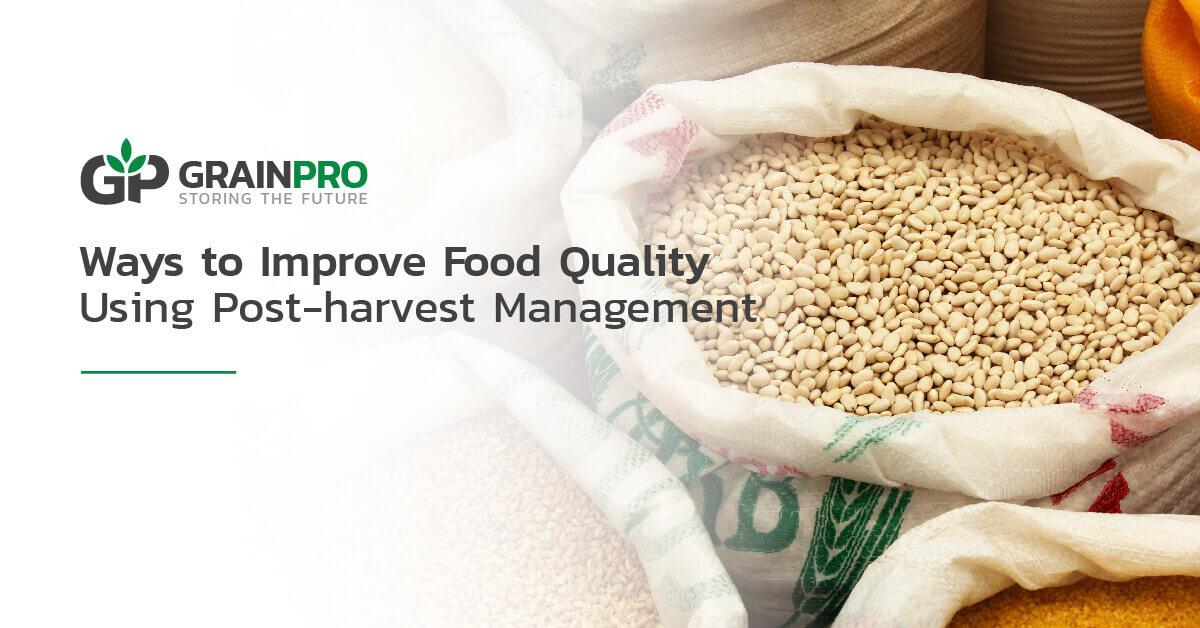Ways to Improve Food Quality Using Post-Harvest Management

Valuing the quality of our lives also means valuing the quality of our food. Science tells us that we need a variety of vitamins and minerals from fresh, healthy, and nutritious food.
Sadly, however, food does not always equate to good food. Food processing and industrial food manufacturing have taken shortcuts that unfortunately also took a toll on the nutrition that our food can provide. In fact, food quality is a bigger issue than many of us realize.
But the good news is there are several ways that we can improve food quality, particularly in post-harvest processes. Here are a few ways to do it:
Preserve nutrients and micro-nutrients. Food quality pertains not only to taste but also to the amount of nourishment that we get from food. Having better post-harvest management systems, such as better storage and adequate transport solutions, ensures that the food we eat comes to us with the nutrients that we need.
During post-harvest season, rice, wheat, or grains that are left exposed to contaminants and pests are prone to nutrient loss. Thus, we should learn to maximize the natural nutrients in our food with the help of secure post-harvest facilities.
Eliminate or lessen synthetic chemicals in food production. Pesticides, insecticides, and fumigants all have advantages and can significantly help reduce agricultural losses when properly used. But we also need to take into account the health effects that these synthetic chemicals have on our bodies. Prolonged exposure to even small amounts of pesticides can cause chronic pesticide poisoning while being exposed to larger quantities can lead to severe acute poisoning. This results in various health issues, from simple headaches to general health decline.
Crops are sprayed with pesticides to help control insect infestations when in storage. This is often done multiple times in order to avoid post-harvest losses. However, there is actually a simpler and healthier solution. Storing commodities in gas-tight and moisture-tight containers can effectively control insect populations without the use of toxic chemicals.
Food handlers and consumers are less likely to be exposed to dangerous chemicals by using better storage solutions. At the same time, we're assured that food quality is easily improved.
Use proper drying methods to inhibit mold growth. Our grains, maize, rice, and other crops are usually dried before being packaged and sent to our groceries and markets. This process prolongs both the shelf life and the quality of our food.
However, grains that are not properly dried can often develop mold growth. Toxic substances like aflatoxins and ochratoxins come when this happens, even if the mold is still unseen by the naked eye. This means we can still ingest these substances while our food has no visible evidence of mold.
Properly drying grains after harvest can help put an end to this issue. Using dryers that efficiently dry grains without damaging them can help avoid mold growth and contamination.
Related: Reducing Health Risks Through Mold Growth Prevention
Multiple issues aside from low food quality can also be addressed when these steps are seriously and fully integrated into our post-harvest systems.
One such issue is food loss. Food producers and traders can lose commodities because of improper post-harvest management resulting in insects or mold. So when better post-harvest solutions improve food quality, we can significantly reduce food loss and waste.
Related: To A Sustainable Future: Benefits of Reducing Post-Harvest Loss
Malnutrition is also addressed when food quality is improved. This is especially important in developing countries, where nourishment and good nutrition can significantly boost mortality and development rates amongst children.
Addressing these issues will also considerably help establish food safety. When we use better post-harvest solutions, we can be assured that our food and our health are no longer at risk from insects, molds, and contaminants.
GrainPro's solutions aid in creating better post-harvest systems. With more reliable storage, transport, and drying technologies, managing food quality can lead to better food, fewer losses, and healthier communities.
For more information on how these solutions can help, click the button below.
Related:
8 Great Ways Hermetic Technology Helps Agri-businesses
4 Tips on How to Avoid Mold Growth in Stored Grains
Organic Pest Control for Stored Grain Insects
Topics: Quality Post-harvest management
